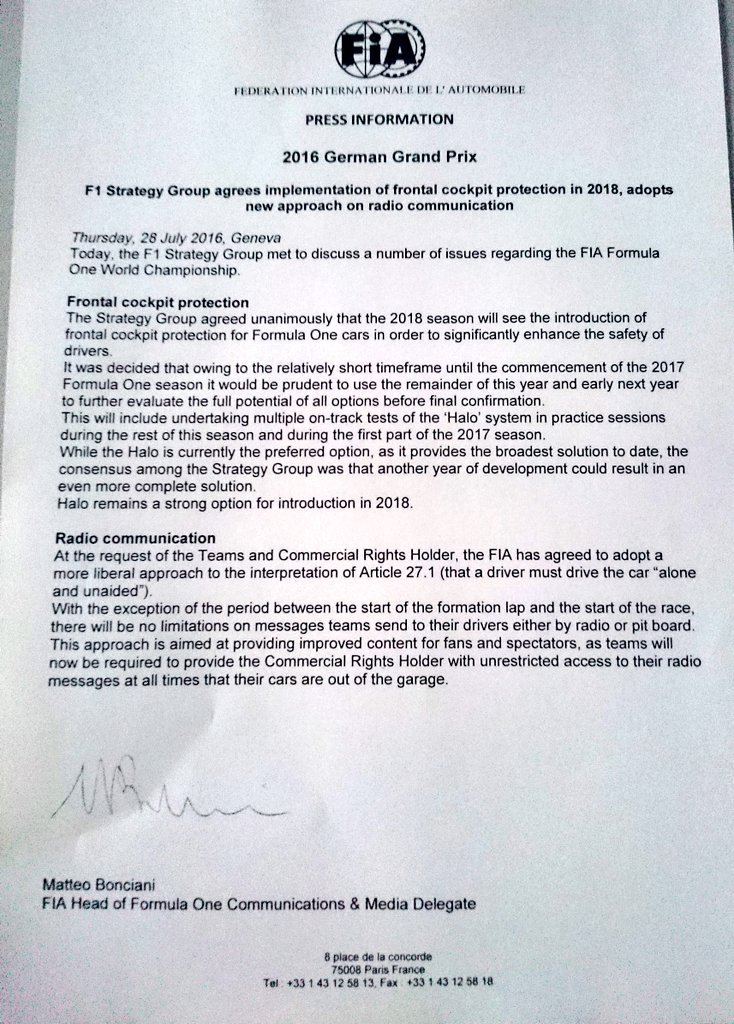Just when you thought F1 cannot make less sense

:
- what about those sensors and zero tolerance, 0 or 1 is too complicated? The horror of applying penalties uniformly regardless of names didn't last long. Bad for business and against very ethos of F1's manipulated results
- so previous penalties would not be erased, how unlucky it would be if the rule that affected some drives but not the others (unfairly) decided championship, right?
Wynters wrote:Manjhi wrote:I don't know the exact reason, but have seen the Bulls closing the gaps to Mercs after 8-10 laps from the start of the race.
I suspect that's more to do with the race settling down and the leaders managing rubber/fuel/engine than it is to do with real pace differentials. I think the key sign would be DRS detection. Looking back, if you see the Bulls closing enough to get DRS, then it's likely to be actual pace. If not, then it's just the leaders stretching their opening stint and avoiding wear on components.
I'm guessing it has got less to do with saving, not much to save or to manage (fuel? perhaps but the same for everyone, tyres likewise) or DRS (why would that matter? gap is better) but more with tyres: let's call them prime, options. The pattern this season with Merc: stronger on harder compound like Austria. Since they expect to lead it makes sense. Ferrari used to be closer during 1st stint too.




